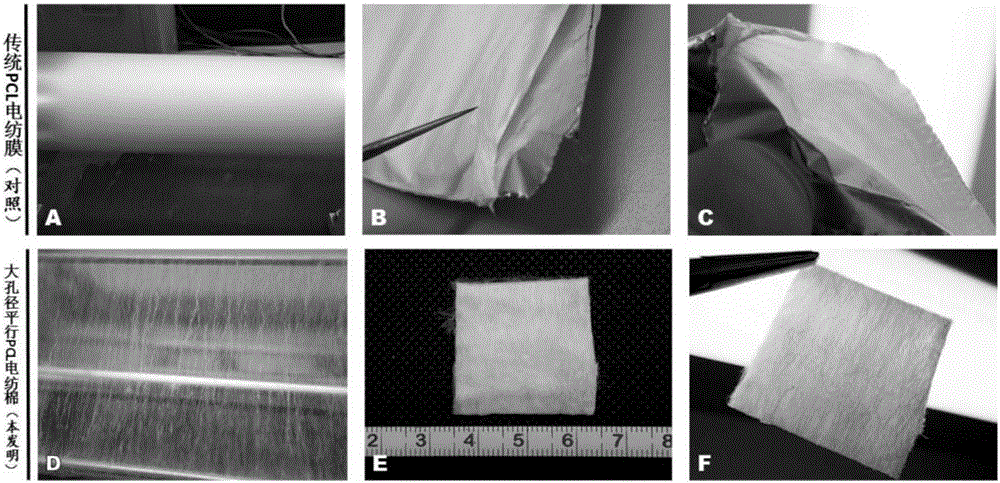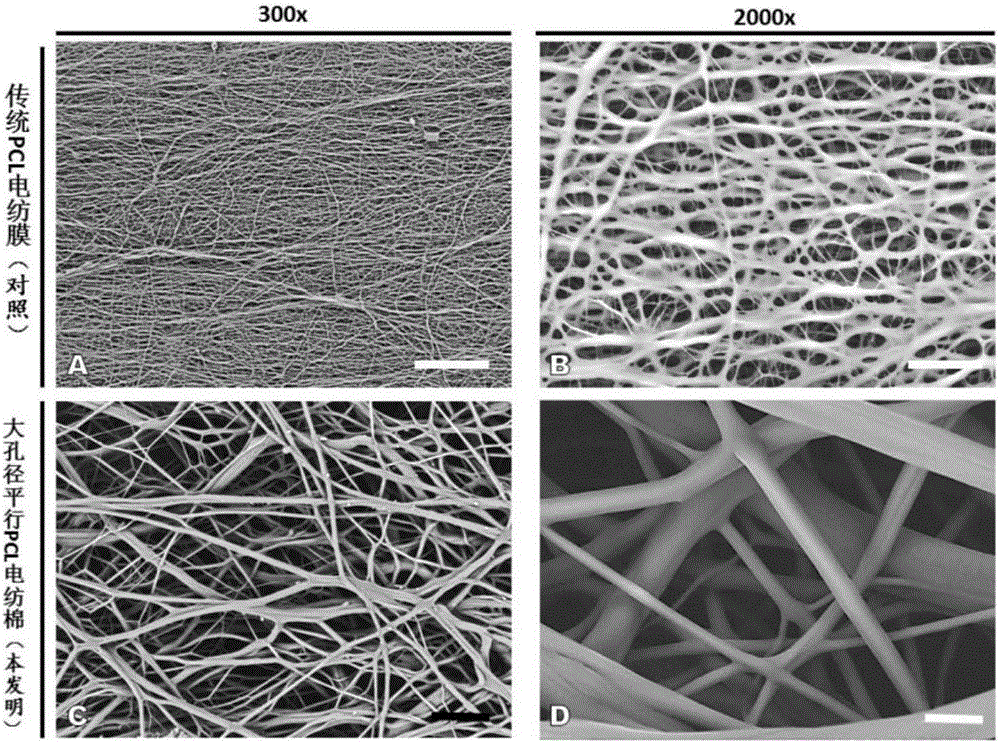Construction of autologous tissue engineering blood vessel by using large-aperture parallel polycaprolactone electrospun cotton
A technology of tissue engineering and polycaprolactone, applied in the field of biomedical engineering, can solve the problems of difficult cell growth, aging, cell loss, etc., and achieve the effects of rapid growth, good mechanical properties and cell compatibility
- Summary
- Abstract
- Description
- Claims
- Application Information
AI Technical Summary
Problems solved by technology
Method used
Image
Examples
Embodiment 1
[0038] 1. Materials and methods
[0039] 1 animal
[0040] 150g male clean SD rats are the animals involved in this experiment, all provided by Shanghai Slack Experimental Animal Co., Ltd. The animal experiment protocol and experimental operation were reviewed and approved by the experimental animal management team of Shanghai Children's Medical Center affiliated to Shanghai Jiaotong University School of Medicine.
[0041] 2 instruments
[0042]
[0043] 3 Reagents and materials
[0044]
[0045] 4 methods
[0046] 4.1 Preparation of relevant solutions
[0047] (1) 10% and 35% polycaprolactone (PCL) electrospinning solutions
[0048] Using TFE as a solvent, weigh the PCL particles with an electronic balance, weigh them according to the solute ratio of 10% and 35% (m / v), and then transfer them into a dissolving bottle. According to the density of 1.386g / ml, measure the corresponding volume of TFE with an electronic balance and transfer it to the corresponding dissol...
PUM
| Property | Measurement | Unit |
|---|---|---|
| pore size | aaaaa | aaaaa |
| diameter | aaaaa | aaaaa |
| diameter | aaaaa | aaaaa |
Abstract
Description
Claims
Application Information
 Login to View More
Login to View More - R&D
- Intellectual Property
- Life Sciences
- Materials
- Tech Scout
- Unparalleled Data Quality
- Higher Quality Content
- 60% Fewer Hallucinations
Browse by: Latest US Patents, China's latest patents, Technical Efficacy Thesaurus, Application Domain, Technology Topic, Popular Technical Reports.
© 2025 PatSnap. All rights reserved.Legal|Privacy policy|Modern Slavery Act Transparency Statement|Sitemap|About US| Contact US: help@patsnap.com



